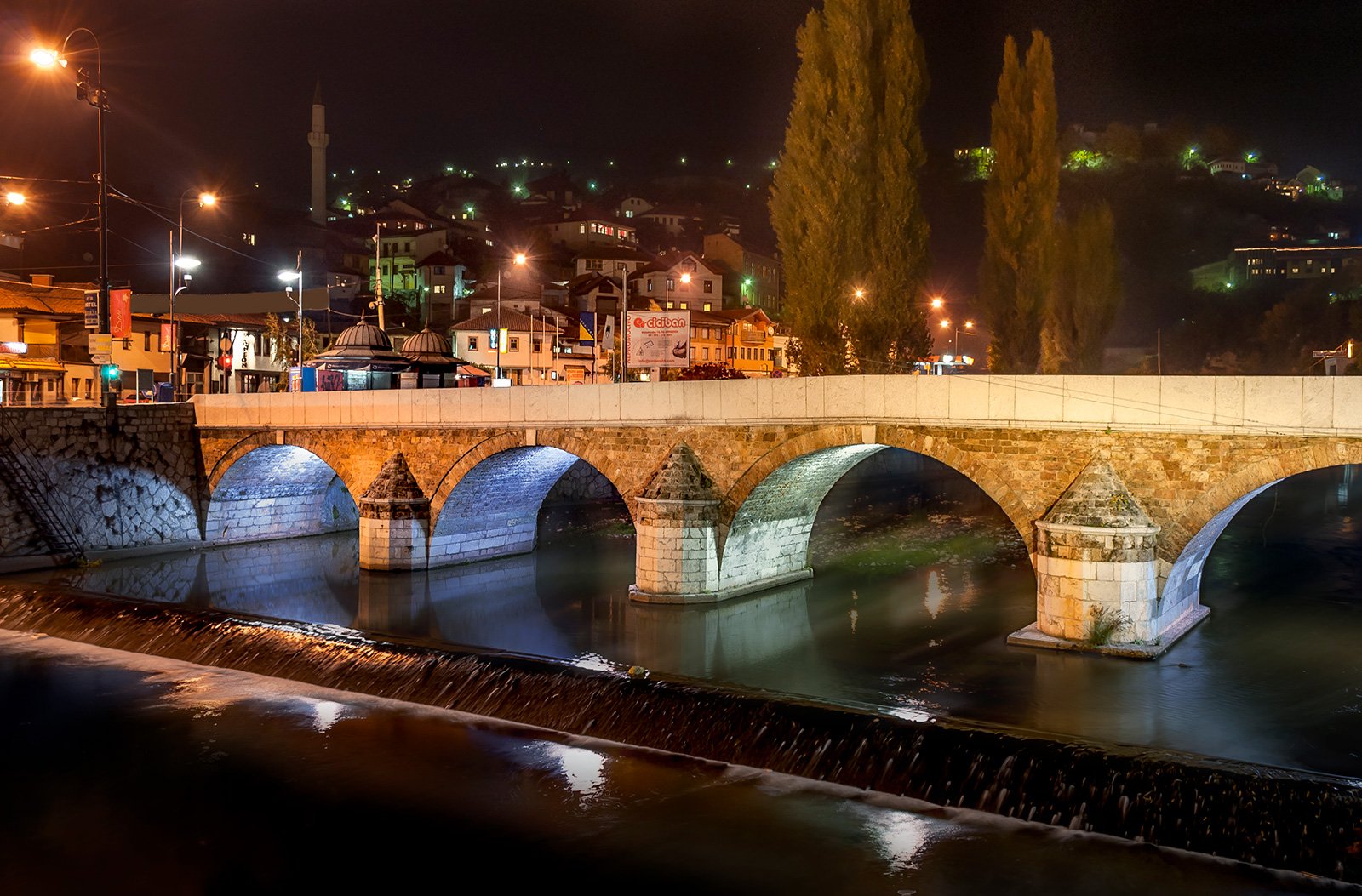
STONE BRIDGES IN SARAJEVO FROM THE OTTOMAN PERIOD
Author: Kenan Šurković, editor of Islamic Arts Magazine • Illustration: Šeher-ćehaja's Bridge • Photo: Kenan Šurković

Sarajevo had most bridges out of all the cities in the Ottoman Bosnia. Besides those on the Miljacka River, bridges were built in a broader area of the city, on the rivers Željeznica and Bosnia. From the present perspective, it is hard to say how many bridges Sarajevo had in total. There were at least seven stone bridges, although only four have been preserved to this day. It is quite understandable that most bridges were built in the city core, from Baščaršija to Skenderija. Today, we are not sure who built these bridges. It is possible that designs came from Istanbul; however, people who built them were certainly from Bosnia. For example, we know that Latin Bridge was built by local constructors. The seven presently known stone bridges are: Kozija ćuprija (Goat's Bridge), Šeher-ćehajin most (Šeher-ćehaja's Bridge), Careva ćuprija (Imperial Bridge), Latinska ćuprija (Latin Bridge), stone bridge across the Koševo brook located near the Ali Pasha Mosque, Rustem-pašin most (Rustem Pasha's Bridge) and Rimski most (Roman Bridge). Imperial Bridge (by the Imperial Mosque) and Ruste Ppasha's Bridge (on the Željeznica River at Ilidža) were destroyed during Austro-Hungarian administration and the Kingdom of Yugoslavia. Bridges were often destroyed because of floods, and thus it has been recorded that a flood in 1791 destroyed or heavily damaged all Sarajevo bridges except the Šeher-ćehaja's Bridge.
Goat's Bridge was built at the entrance to the city, on the Miljacka river. It is a one-arch bridge unlike most Sarajevo bridges. It was built in the second half of the 16th century, most likely as a legacy of Sokollu Mehmed Pasha. It is a beautiful bridge which is recognizable by two large round openings at the corners of the structure which help support the weight. The bridge is 42 meter long and was built of limestone and travertine.
Goat’s Bridge (author: Kenan Šurković)
Šeher-ćehaja's Bridge is situated in the close proximity of the Town Hall. It was built in 1585/86. It is a bridge with several arches, or more accurately five, though only four are visible today due to backfilling of one arch. It was built of limestone and travertine. It is 40 meter long. Judging by its name, it was obviously commissioned one of Sarajevo ćehajas (mayors).
Šeher-ćehaja's Bridge (author: Kenan Šurković)
Latin Bridge was named after the Latin neighborhood, where Catholics and Dubrovnik merchants lived. However, it is a private legacy of Sarajevo merchant Abdullah Briga. AT the same spot, there used to be another bridge, which was destroyed in a flood of 1791. Funds which were left by Briga, who left money for building a property, were used to build the present bridge. The bridge is 40 meter long and has four arches, though one was buried in the period of Austro-Hungary (same as in the case of Šeher-ćehaja's Bridge). Close to the central arch there are two round openings which help support the weight.
Roman Bridge is situated at the outskirts of the city, in Ilidža neighborhood, across the Bosnia river. The name should not deceive anyone, since it was not built in the Roman but rather in the Ottoman period. It was probably named 'Roman' after a Roman road which went there, or after stone blocks from a Roman building which were built into the bridge structure. It is assumed that it was built in the first half of the 16th century, commissioned by one of three possible sponsors: Semiz Ali Pasha, Gazi Ali Pasha and Rustem Pasha, though it is most likely that it was the third one. The bridge is 52 meter long, and has a stone ramp (access to the bridge) on the west side. The bridge has an extreme ambiental value.

